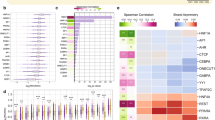Abstract
Background
The liver X receptor (LXR), a transcription factor that forms a heterodimer with the retinoid X receptor, plays a key role in the transcriptional regulation of many important genes implicated in prevalent metabolic diseases. In spite of numerous studies, a complete list of LXR direct target genes remains elusive. To complement experimental approaches, computational prediction can be used to help build such a list because all LXR target genes are expected to carry the response elements (LXREs) in their promoter or enhancer regions. In practice, however, such a prediction has been hampered by the inaccuracies of currently available predictive models of LXREs. We report on a novel computational application for the highly accurate prediction of LXREs in DNA sequences.
Methods
We first conducted a comprehensive review of experimentally determined LXR target genes and collected all known LXREs. Subsequently, all such sites were classified using various computational methods based on sequence similarity to identify multiple subtypes. A library of Hidden Markov Models (LXRE.HMM) was developed to represent all subtypes and to enable the promoter scanning of LXR target genes.
Results and conclusion
Our model outperformed the widely used LXRE model in MatInspector in identifying the LXREs for all known LXR direct target genes at the experimentally verified positions. As a result, this new approach will make the genomewide prediction of LXR target genes feasible.





Similar content being viewed by others
References
Cao G, Liang Y, Jiang XC, et al. Liver X receptors as potential therapeutic targets for multiple diseases. Drug News Perspect 2004; 17(1): 35–41
Ulven SM, Dalen KT, Gustafsson JA, et al. LXR is crucial in lipid metabolism. Prostaglandins Leukot Essent Fatty Acids 2005; 73(1): 59–63
Li AC, Glass CK. PPAR- and LXR-dependent pathways controlling lipid metabolism and the development of atherosclerosis. J Lipid Res 2004; 45(12): 2161–73
Lu TT, Repa JJ, Mangelsdorf DJ. Orphan nuclear receptors as eLiXiRs and FiXeRs of sterol metabolism. J Biol Chem 2001; 276(41): 37735–8
Michael LF, Schkeryantz JM, Burris TP. The pharmacology of LXR. Mini Rev Med Chem 2005; 5(8): 729–40
Valledor AF. The innate immune response under the control of the LXR pathway. Immunobiology 2005; 210(2–4): 127–32
Lala DS. The liver X receptors. Curr Opin Investig Drugs 2005; 6(9): 934–43
Willy PJ, Umesono K, Ong ES, et al. LXR, a nuclear receptor that defines a distinct retinoid response pathway. Genes Dev 1995; 9(9): 1033–45
Mangelsdorf DJ, Thummel C, Beato M, et al. The nuclear receptor superfamily: the second decade. Cell 1995; 83(6): 835–9
Mak PA, Kast-Woelbern HR, Anisfeld AM, et al. Identification of PLTP as an LXR target gene and apoE as an FXR target gene reveals overlapping targets for the two nuclear receptors. J Lipid Res 2002; 43(12): 2037–41
Cartharius K, Frech K, Grote K, et al. MatInspector and beyond: promoter analysis based on transcription factor binding sites. Bioinformatics 2005; 21(13): 2933–42
Sandelin A, Wasserman WW, Lenhard B. ConSite: web-based prediction of regulatory elements using cross-species comparison. Nucleic Acids Res 2004; 32 (Web Server issue): W249–52
Sandelin A, Wasserman WW. Prediction of nuclear hormone receptor response elements. Mol Endocrinol 2005; 19(3): 595–606
Matys V, Fricke E, Geffers R, et al. TRANSFAC: transcriptional regulation, from patterns to profiles. Nucleic Acids Res 2003; 31(1): 374–8
Hodges PE, Carrico PM, Hogan JD, et al. Annotating the human proteome: the Human Proteome Survey Database (HumanPSD) and an in-depth target database for G protein-coupled receptors (GPCR-PD) from Incyte Genomics. Nucleic Acids Res 2002; 30(1): 137–41
Edgar RC. MUSCLE: a multiple sequence alignment method with reduced time and space complexity. BMC Bioinformatics 2004; 5: 113
Thompson JD, Higgins DG, Gibson TJ. CLUSTAL W: improving the sensitivity of progressive multiple sequence alignment through sequence weighting, position-specific gap penalties and weight matrix choice. Nucleic Acids Res 1994; 22(22): 4673–80
Nicholas KB, Nicholas HB, Deerfield DW. GeneDoc: analysis and visualization of genetic variation [online]. Available from URL: http://www.psc.edu/biomed/genedoc/ebinet.htm [Accessed 2007 Feb 27]
Kumar S, Tamura K, Nei M. MEGA3: Integrated software for molecular evolutionary genetics analysis and sequence alignment. Brief Bioinform 2004; 5(2): 150–63
Eddy SR. Profile hidden Markov models. Bioinformatics 1998; 14(9): 755–63
Efron B. Bootstrap methods: another look at the jackknife. Ann Statist 1979; 7: 1–26
Schmid CD, Perier R, Praz V, et al. EPD in its twentieth year: towards complete promoter coverage of selected model organisms. Nucleic Acids Res 2006; 34 (Database issue): D82–5
Quandt K, Frech K, Karas H, et al. MatInd and Matlnspector: new fast and versatile tools for detection of consensus matches in nucleotide sequence data. Nucleic Acids Res 1995; 23(23): 4878–84
Costet P, Luo Y, Wang N, et al. Sterol-dependent transactivation of the ABC1 promoter by the liver X receptor/retinoid X receptor. J Biol Chem 2000; 275(36): 28240–5
Whitney KD, Watson MA, Goodwin B, et al. Liver X receptor (LXR) regulation of the LXRalpha gene in human macrophages. J Biol Chem 2001; 276(47): 43509–15
Yuh CH, Davidson EH. Modular cis-regulatory organization of Endol6, a gutspecific gene of the sea urchin embryo. Development 1996; 122(4): 1069–82
Krivan W, Wasserman WW. A predictive model for regulatory sequences directing liver-specific transcription. Genome Res 2001; 11(9): 1559–66
Wasserman WW, Fickett JW. Identification of regulatory regions which confer muscle-specific gene expression. J Mol Biol 1998; 278(1): 167–81
Acknowledgments
The authors wish to thank Ernst Dow, Alex Varshavsky, Tao Wei, Robert Gadski, Thomas Burris, Keith Stayrook, Berket Khalifa, Eric Su, Vaibhav Narayan, Jude Onyia, and Arun Nayar for helpful comments and discussions.
No sources of funding were used to assist in the preparation of this study. The authors have no conflicts of interest that are directly relevant to the content of this study.
Author information
Authors and Affiliations
Corresponding author
Rights and permissions
About this article
Cite this article
Varga, G., Su, C. Classification and Predictive Modeling of Liver X Receptor Response Elements. BioDrugs 21, 117–124 (2007). https://doi.org/10.2165/00063030-200721020-00006
Published:
Issue Date:
DOI: https://doi.org/10.2165/00063030-200721020-00006




